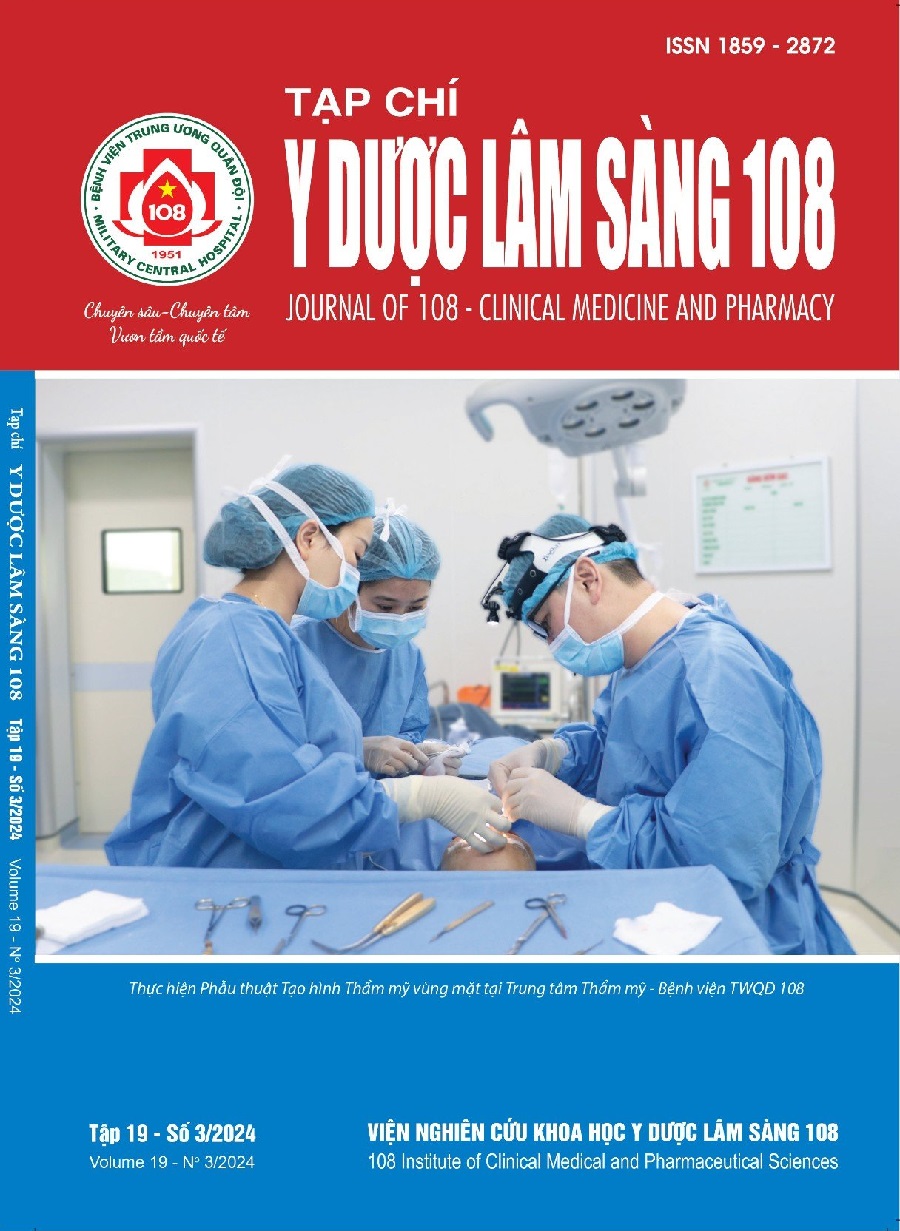Relationships between cardio-ankle vascular index with coronary artery damage and cardiovascular events in patients with chronic coronary artery disease after 24 months
Main Article Content
Keywords
Abstract
Objective: To examine relationship between cardio-ankle vascular index (CAVI) with coronary artery damage and cardiovascular events in patients with chronic coronary artery disease (CAD) over 24 months follow-up. Subject and method: There were a total of 160 inpatients at Duc Giang General Hospital - Hanoi, diagnosed with CAD. Data collected included: Framingham score, degree of coronary artery stenosis, number of significant coronary artery stenosis, Syntax score classification, Gensini score classification. Patients were followed until one of the cardiovascular events occurred or up to 24 months after study entry. Coronary artery stenosis and cardiovascular events were monitored, including: stroke, acute coronary syndrome, acute lower extremity artery disease, and death from all causes. Result: CAVI increased with the degree of coronary stenosis (p<0.05). CAVI was higher when severe stenosis was ≥ 75% compared to < 75% coronary artery. CAVI increased significantly according to the number of damaged coronary arteries. CAVI increases higher when there was ≥ 2 stenosis compared to < 2 stenosis of the coronary artery. CAVI in the group with mild Syntax score was lower than in the moderate and severe groups. CAVI increased significantly according to Gensini score. CAVI had an average AUC for predicting risk of CAD (AUC=0.796, p<0.05). The group with CAVI-mean ≥ 9.63 had a 6.4 times higher risk of cardiovascular events than the group with CAVI lower than the cut-off point. Conclusion: CAVI is a useful indicator for predicting risk of coronary artery stenosis and cardiovascular events. Further research needs to be conducted to confirm this result in CAD patients in Vietnam.
Article Details
References
2. Tanaka H, Munakata M, Kawano Y, Ohishi M, Shoji T, Sugawara J, Tomiyama H, Yamashina A, Yasuda H, Sawayama T, Ozawa T (2009) Comparison between carotid-femoral and brachial-ankle pulse wave velocity as measures of arterial stiffness. Journal of hypertension 27(10): 2022-2027.
3. Kirigaya J, Iwahashi N, Tahakashi H et al (2020) Impact of cardio-ankle vascular index on long-term outcome in patients with acute coronary syndrome. J Atheroscler Thromb 27(7): 657-668.
4. Knuuti J, Wijns W, Saraste A et al (2019) 2019 ESC Guidelines for the diagnosis and management of chronic coronary syndromes: The Task Force for the diagnosis and management of chronic coronary syndromes of the European Society of Cardiology (ESC). Eur Heart J 41(3): 417-418.
5. Miyoshi T, Doi M, Hirohata S et al (2010) Cardio-ankle vascular index is independently associated with the severity of coronary atherosclerosis and left ventricular function in patients with ischemic heart disease. J Atheroscler Thromb 17(3): 249-58.
6. Horinaka S, Yabe A, Yagi H et al (2011) Cardio-ankle vascular index could reflect plaque burden in the coronary artery. Angiology 62(5): 401-408.
7. Nakamura K, Tomaru T, Yamamura S et al (2008) Cardio-ankle vascular index is a candidate predictor of coronary atherosclerosis. Circ J 72(4): 598-604.
8. Izuhara M, Shioji K, Kadota S et al (2008) Relationship of cardio-ankle vascular index (CAVI) to carotid and coronary arteriosclerosis. Circ J 72(11): 1762-1767.
 ISSN: 1859 - 2872
ISSN: 1859 - 2872
